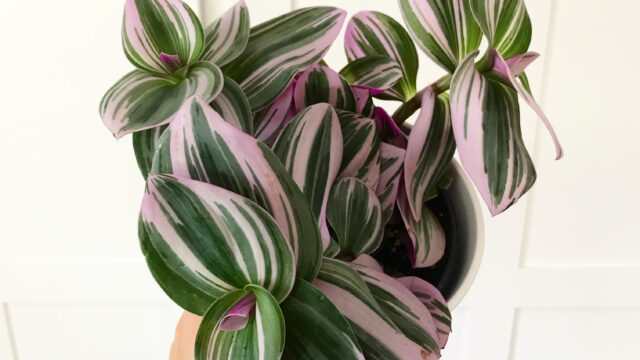
When I first began plant collecting, I would always see this small purple trailing plant, which was called by a million different names, in every garden center. It was scientifically known as Tradescantia and it was pretty and I bought one.
On to the ASPCA toxicity website I went, and found a myriad of different information. Is Tradescantia toxic to pets? Is it safe? No one really knows. Looking up the plant under the former name “wandering jew” (now changed informally to “wandering dude”), it was not considered safe. I searched again, this time under “Tradescantia flumeninsis” and it was safe. I became frustrated, gave the plant to someone and never revisited them again until recently because I found this:
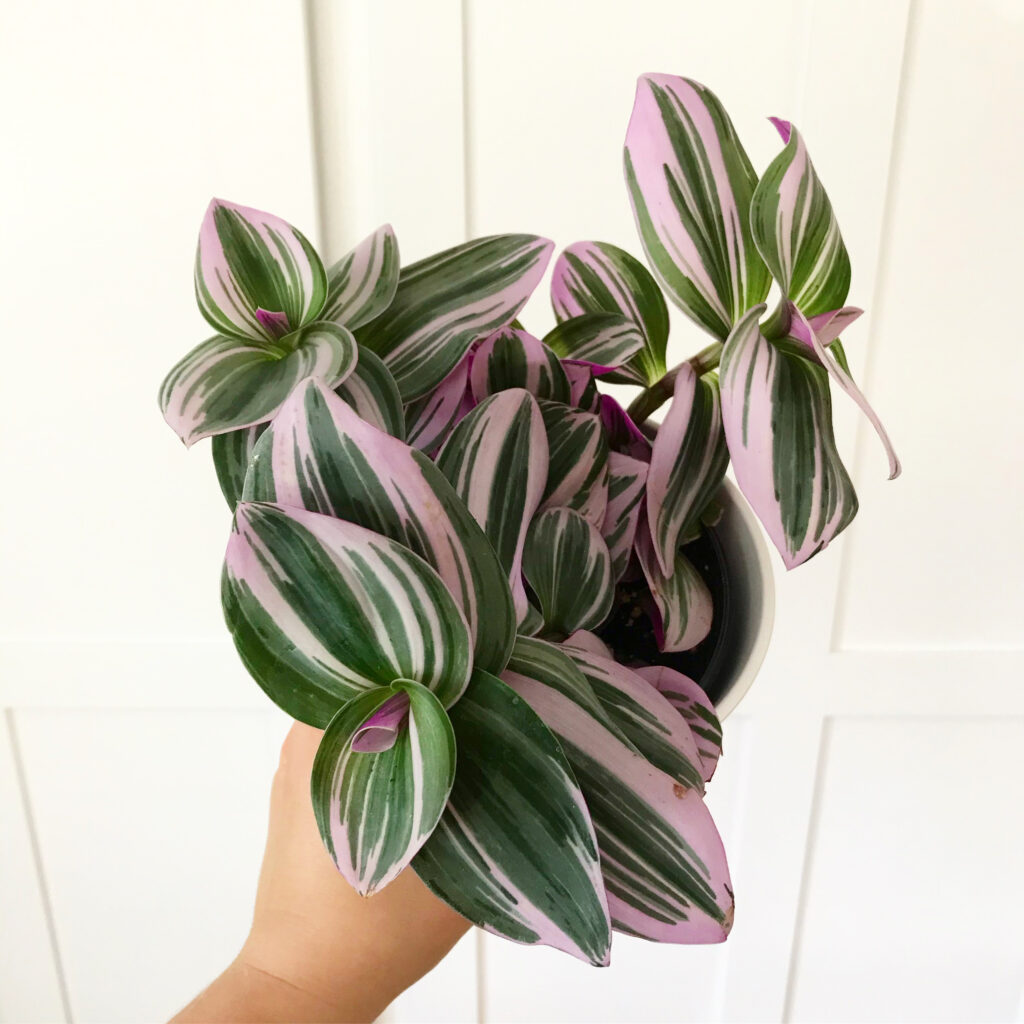
Pretty isn’t she? Yet ANOTHER variation of Tradescantia, a “Tradescantia nanouk“. And another variety where we contemplate toxicity. Frustrating isn’t it? Well I decided to make a blog post about it because I, like, you, needed to find out what is just going on here.
What Exactly are Tradescantia?
So first off, Tradescantia is a type of spiderwort, which is a name most people have heard of. Spiderwort is a common perennial trailing, low-growing outdoor plant which looks kind of boring. All Tradescantia are part of the family Commelinaceae. The most common plant I see are the purple and green variegated Tradescantia zebrina, also called an inch plant. Yes, yet another name. There are so many varieties and color combos, not to mention dozens of just the Tradeascatia zebrina. There are really too many names. Someone needs to take care of this.
Why are there so many names? I don’t know the answer, it was more a rhetorical question.
Is Tradescantia Toxic to Cats and Dogs?
After a number of Google searches, vet conversations, and triple checking sources, it’s a resounding yes. Yes, technically, Tradescantia is mildly toxic to cats and dogs – and I mean all varieties.
If you’re familiar with my blog, you know that if two plants are in the same family, and one is considered toxic and non toxic, I always err on the side of caution and label it as toxic. Why take a chance, right? Right. That same principal happens here. If I know that Tradescantia zebrina is toxic but flumeninsis is non-toxic, I’m going to just say it’s toxic.
What kind of toxic are we talking? A three on a scale from 1-10. If consumed, which Harlequinn has once before, there’s a chance of dermatitis, a skin issue. Every animal is different, but expect some mild discomfort in some form if a lot of this plant is devoured by a bored cat.
Since these are trailing plants, it’s easy to keep them out of paw reach. Hanging planters, using carts or shelves are all genius ways to eliminate pillaging, swatting and munching. Cats have a lot of time to pass.
Types of Tradescantia
Here’s a list of Trdescantia varities most commonly found in garden centers and big box stores. This is not at all the all-encompassing list, but it’s a good intro list.
Tradescantia zebrina
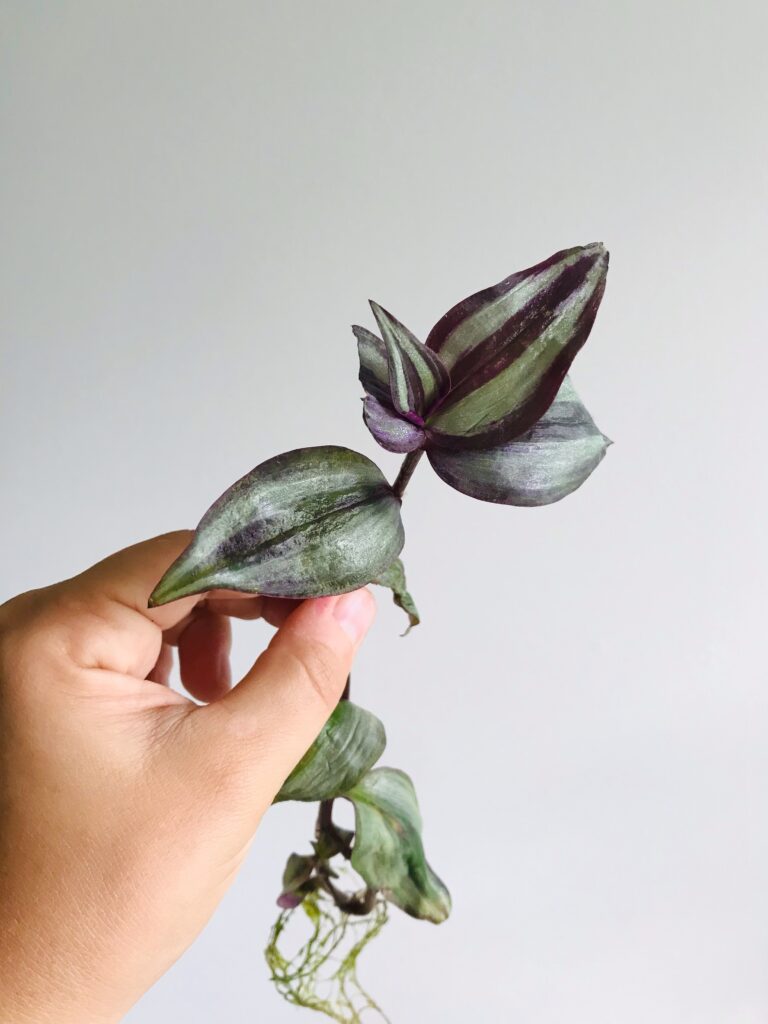
Tradescantia flumeninsis “Albovittata” (Tradescantia albiflora “Albovittata”)
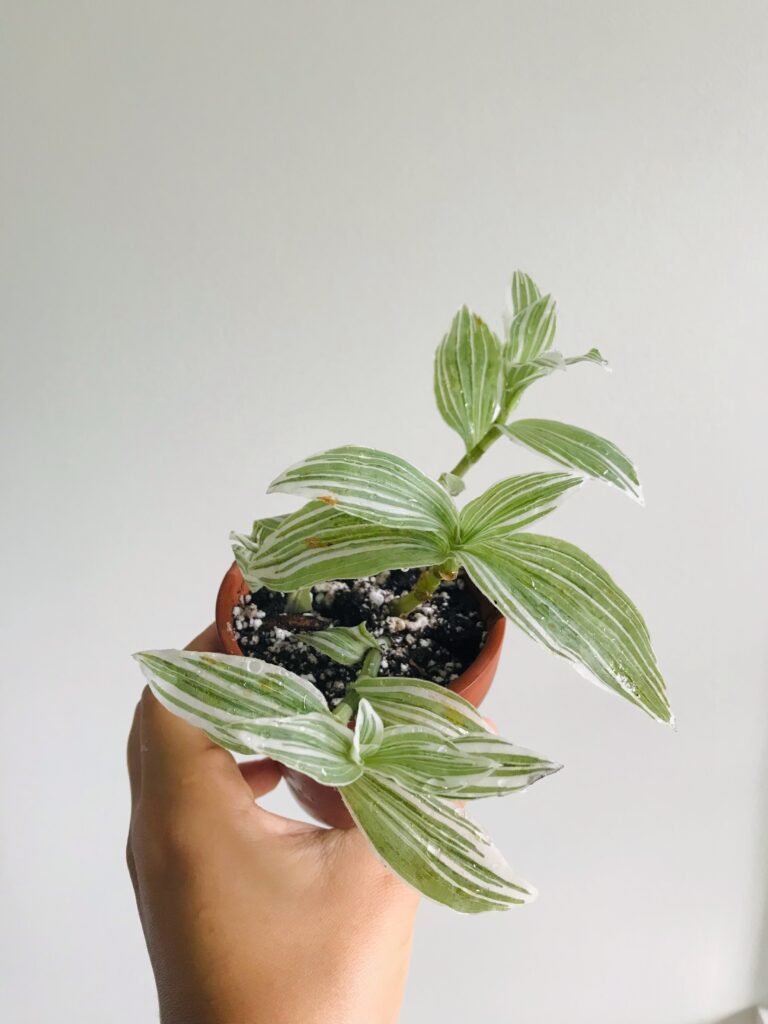
Tradescantia pallida “Purple Heart”
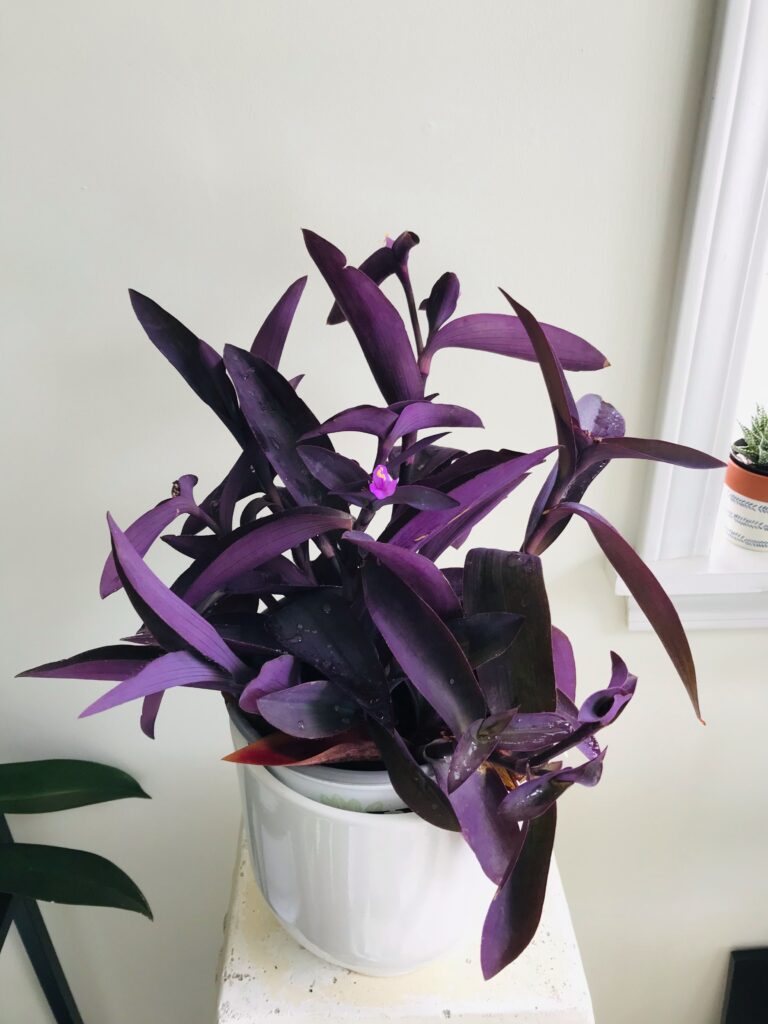
Tradescantia bossfeldiana “Nanouk”

Tradescantia fluminensis “White Stripe”
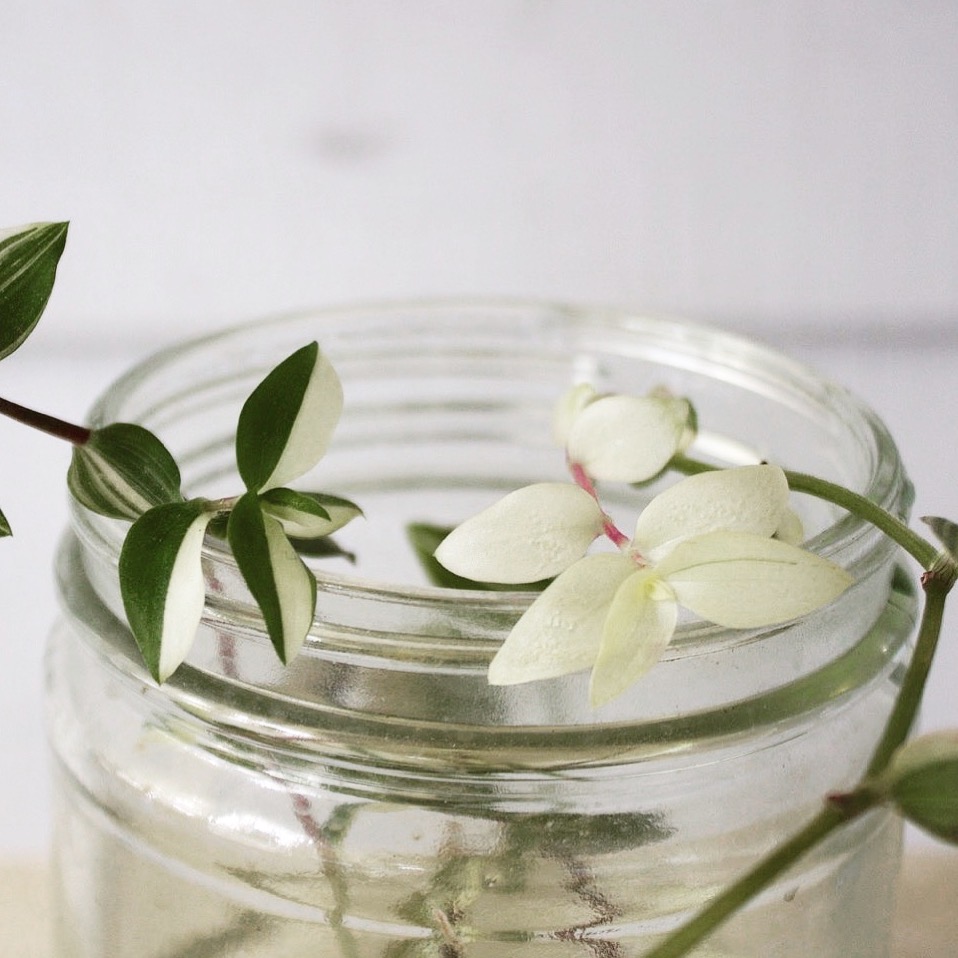
Tradescantia chrysophylla
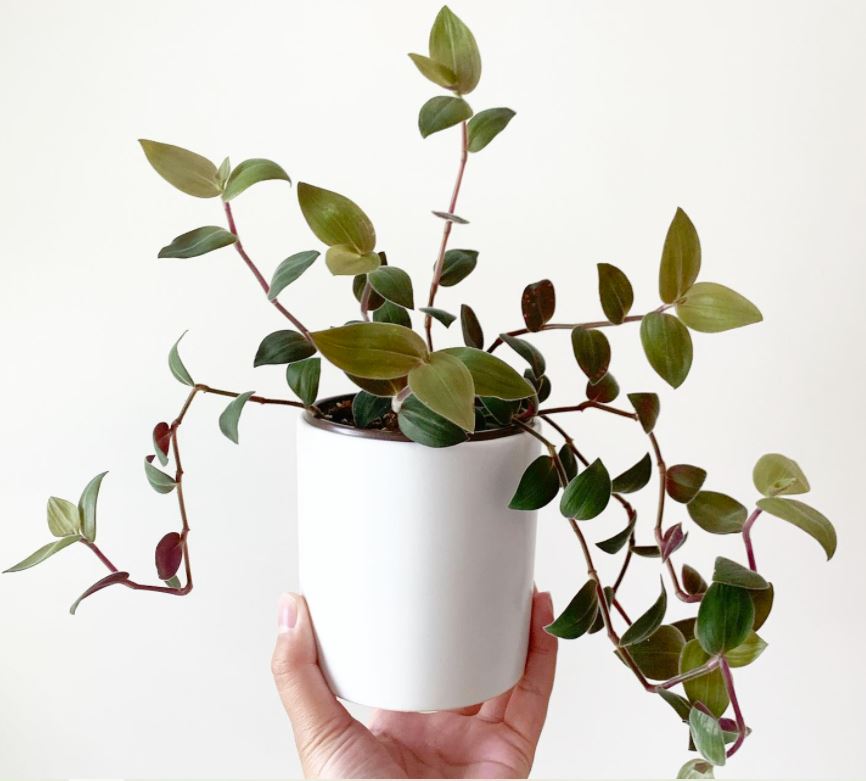
Tradescantia fluminensis “Tricolor”
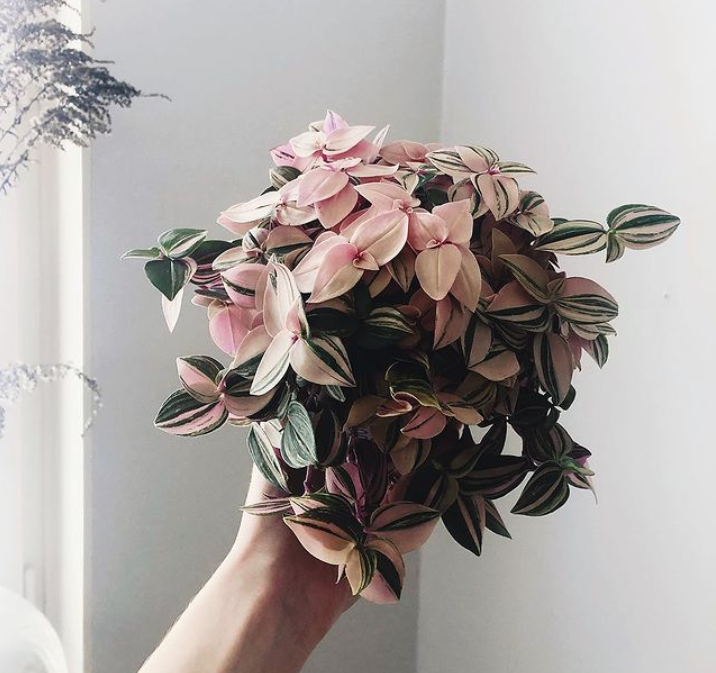
Tradescantia spathacea “Moses in the Cradle”
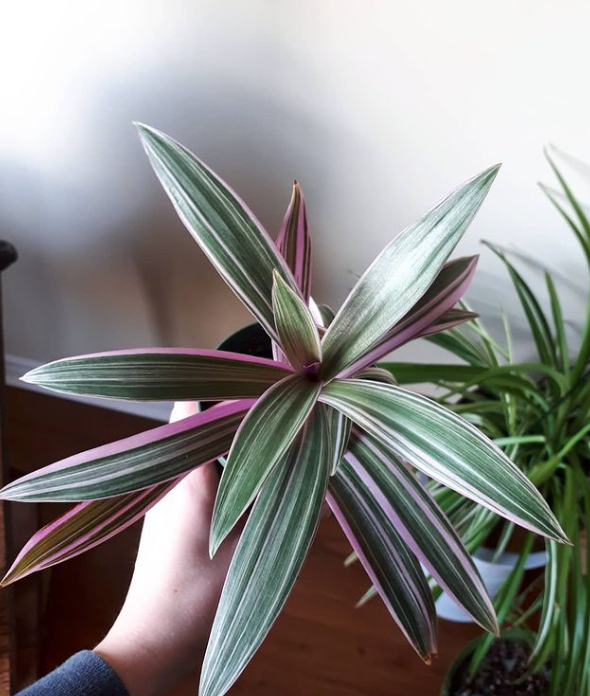
Tradescantia fluminensis “Varigata” (top plant)
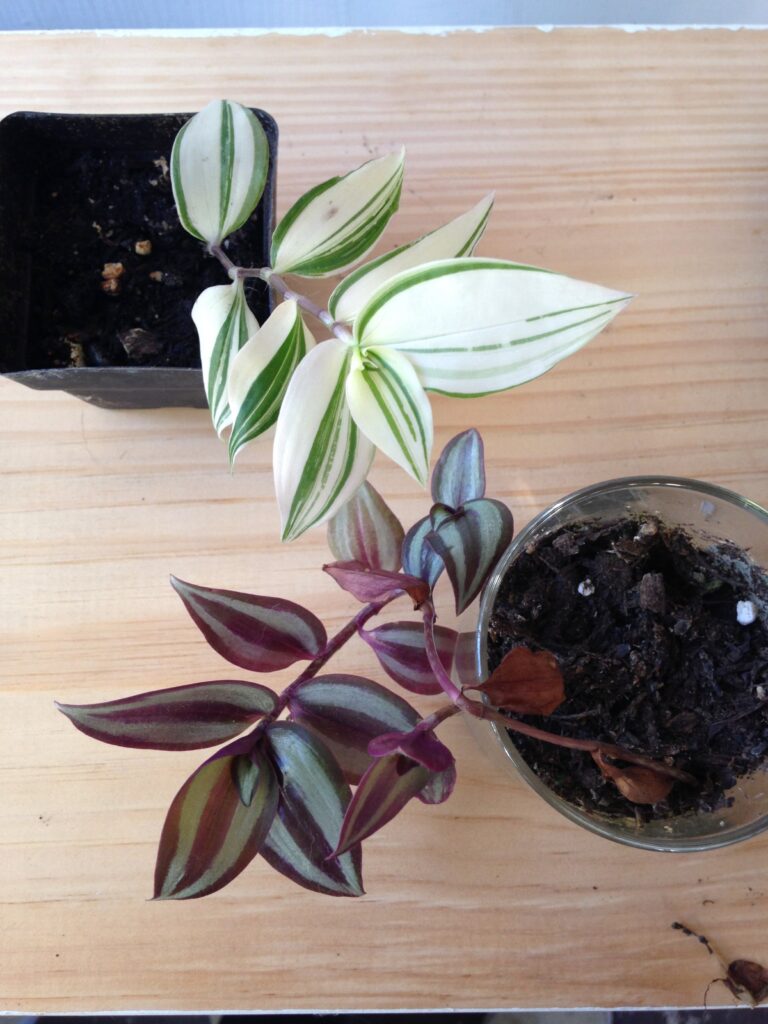
Caring for your Tradescantia
If you so choose to bring any type of Tradescantia in your home, you should probably know how to care for it. They’re often labeled as “easy!” and “low light!” plants but c’mon. That’s all fake news.
They are not “easy” and hate low light. Actually no plant likes low light, but that’s another rant on another post. When I say they aren’t easy plants I just mean they need some specialized care. Once you get the knack for it they legit grow like weeds.
Light: All Tradescantia like bright indirect light. This keeps their variegation spicy and vivid and promotes tight growth. Lower light conditions cause them to become faded very leggy. Leggy and awkward.
Watering: So, I’m going to assume your plant is in a nice bright spot. Watering is actually simple, water only when 75% dry. I also let mine stay a bit moist when I water because they get crispy leaves if you let them go too long without water.
Humidity: Humidity isn’t a huge deal, but generally the more humid, the better they’ll look. I have a bunch of the “purple heart” variety and man, they love it outside in the summer. Generally, a regular room’s humidity is fine.
Fun Facts and How Not to Kill Your Plant
Remember to keep them in brightly lit places and check for bugs often. Tradescantia are pretty resilient, but I sometimes find spider mites partying on the leaves like it’s spring break.
Also, don’t forget that these are trailers! They love a good hanging basket and look really pretty. Also, one of my favorites is the Tradescantia pallida “Purple Heart” which pumps out these tiny pink flowers that I adore.
Tradescantia actually came back from the “granny plant club” in 2018 when my friend Anna (from @littleandlush on IG) posted her PINK GORGEOUS PLANT and then everyone had to have one. Before that I swear, I didn’t see any Tradescantia as a haute plant on social media.
I would love to hear your feedback too! Have you also had trouble finding clarity on toxicity? Do you hate these plants? Do you love them? Please share away.


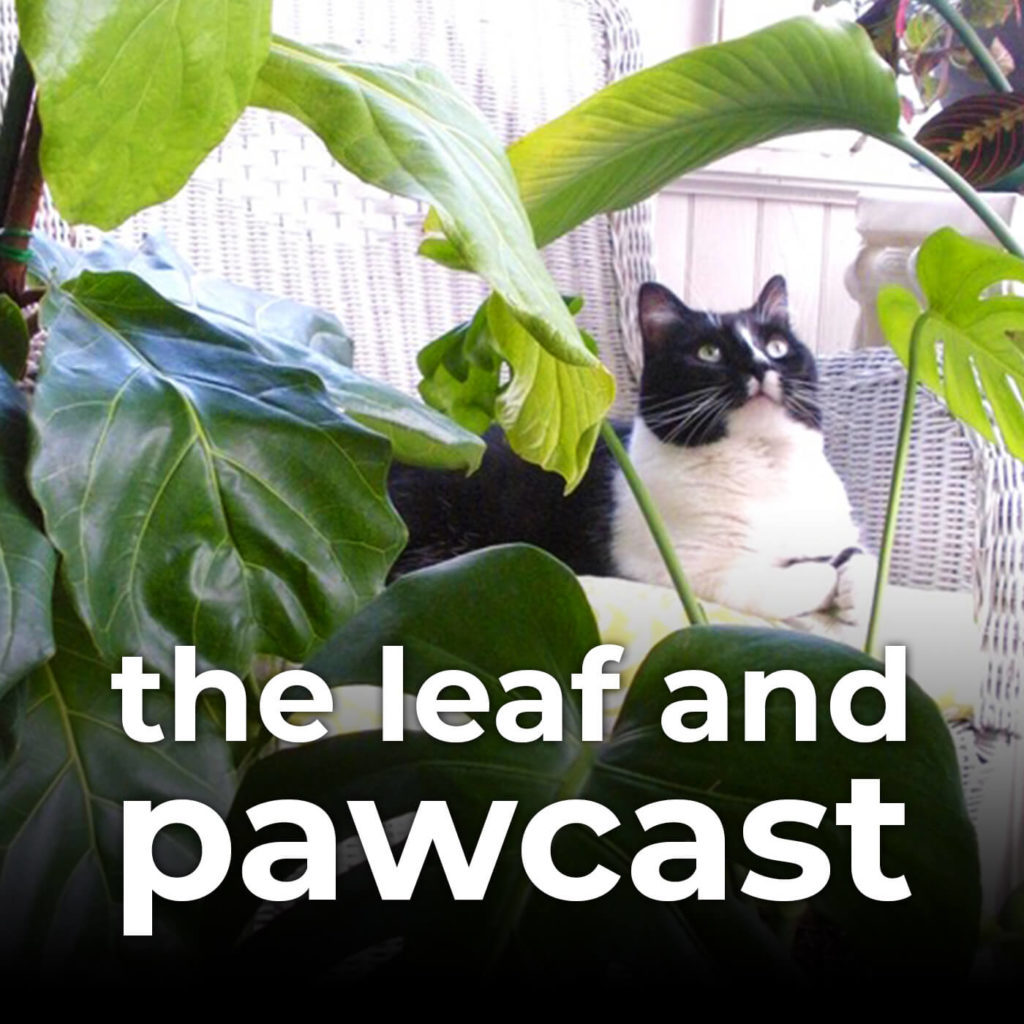
I’m a huge fan of my Tradescantia (I think I have a bossfeldiana)! Got it a year ago and it’s grown like crazy. Originally only had 2 stalks and now it’s got about 10, and yields plenty of cuttings for propagation!
Only question is, the leaves have been pretty lackluster for about a month now. Before, they were noticeably more supple and had a deeper purple hue, now they’re almost translucent and limp. I chalked it up to overwatering and/or buggies and am letting it dry out, any other tips?
Hi Elsa! It can definitely be a number of things, and leaves are the first to suffer if there are issues. Overwatering could do it and spider mites or thrips are a top offender. Either way I’d take any unsightly growth off, place in a very warm window and start the plant over. They grow so fast that it’s probably better to cut any affected growth off and just have new healthy growth begin again.
I know this reply Is a bit late, but I figured I’d still try 🙂
Anywho one trick I learned from my favorite little plant store where I got my tradescantia nanouk is the use of a “pebble tray” , if the purple isn’t as bright as it once was. They like humidity and if your location, like mine, isn’t a very humid place try putting the plant on a tray filled with pebbles and water in it. As the water evaporates it provides more humidity and in turn the purple is more vibrant again. I just got a tray from a plastic pot that was quite a bit bigger so there was lot of room to place rocks around it along with an inch or so of water. The plant is in a pot with a built in tray, by the way, you don’t want the plant soak up all the water through the bottom whole or you risk root rot.
Anyway, just thought I’d share what I learned. It made a noticeable difference for me.
My Mom always grew these in our home, along with the beautiful and trailing Pothos varieties. To this day, these are some of my favorite and easiest plants to grow and thrive in my home. They are both also very easy to propagate and share with friends, family or grow your own plant collection.
These plants can also cause allergic reaction in humans. Contact with leaves and sap causes me to break out in a very irritating rash that lasts for several days after contact.
This was really helpful!!! I have the nanouk and I’ve started to notice the base shrivels up and it’s starting to look like it’s rotting. How do I fix this!! Is there a way to propagate this type or plant more?
Yes, it’s super easy to propagate – just take a chunk off about 4″ long with a few leaves and place in water – they will grow roots in no time. These also like to always be lightly moist so they tend to get root rot if you let them dry completely and then saturate them.
For a healthy cat to get a reaction eating Tradescantia, it basically has to eat a whole plant.. On top of that, adult cats has a “built in” sence for what greenery they can and cannot eat. Even our chubby foodie took one small chew of the Tradescantia, and then let it be. As long as you keep the super poisonous plants away from your home, there should be nothing to worry about 😊
Have 2 cats, and 12+ years experience working with plants and flowers.
I think my puppy ate a piece of the plant. Do you know how deadly or poisonous it is to dogs. And by any chance if you know how to treat the poison?
Jacob, Contact your vet first and foremost – in the event of any plant consumption they will be able to help best.
I heard these are edible.. Is there any truth to this?
actually i found my own answer – it is Commelina cyanea that is not edible.